The Baishatun Matsu Pilgrimage, one of the largest annual religious processions in Taiwan, was to set off from Miaoli County’s Baishatun (白沙屯) last night.
The procession of the sea goddess Matsu (媽祖) is being organized by the Gong Tian Temple (拱天宮).
President Tsai Ing-wen (蔡英文) visited the temple in the afternoon to dedicate a plaque and take part in a ritual to move the deities from their seats in the temple to prepare them for the procession.
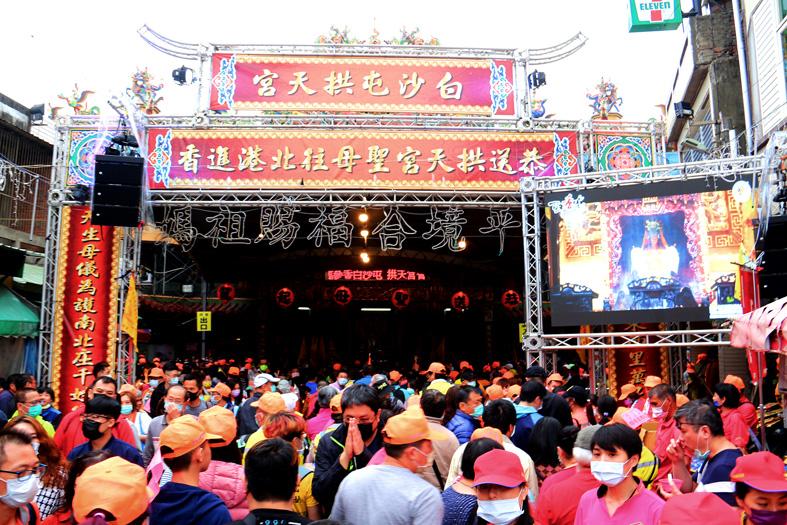
Photo: CNA
Tsai said she prayed to Matsu to bring relief from the current water shortage.
She was accompanied by central and local government officials including Minister of the Interior Hsu Kuo-yung (徐國勇) and Miaoli County Commissioner Hsu Yao-chang (徐耀昌), as well as former minister of culture Cheng Li-chiun (鄭麗君).
About 78,000 people have signed up to participate in this year’s procession, which is to travel 400km to Chao Tian Temple (朝天宮) in Yunlin County’s Beigang (北港) and back.
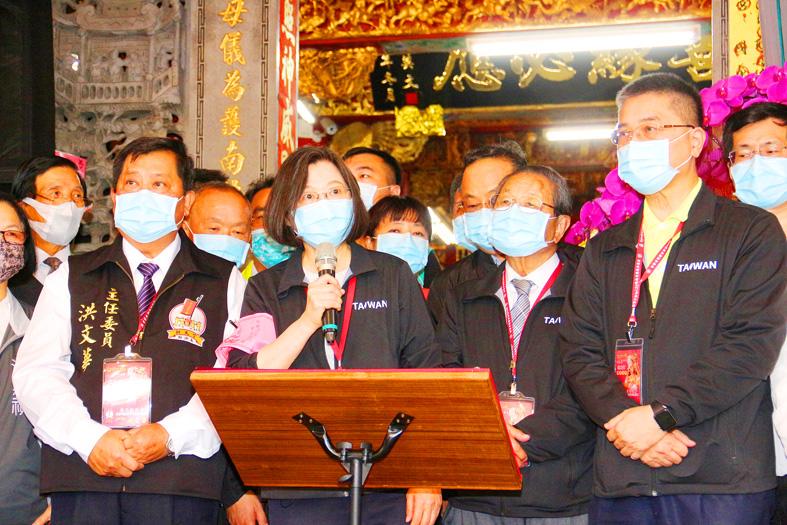
Photo: CNA
A record 55,000 people participated in last year’s event, the organizers said.
Gong Tian Temple late on Thursday began pre-procession rituals by raising a banner to announce the start of this year’s pilgrimage. Worshipers have since flocked to the temple, bringing offerings of food and praying for a smooth journey.
The banner was to be carried at the front of the procession, which was scheduled to set off at 11:40pm yesterday.
The pilgrimage is officially recognized as the longest in Taiwan and is also known for its unplanned route, which is determined by the way in which Matsu’s palanquin moves or tilts during the procession.
Only the date of arrival at the Yunlin temple and the return date to Miaoli are fixed, having been decided by Matsu during a ritual held before the Lunar New Year.
Otherwise, the procession makes sudden turns and stops that are interpreted as reflecting the deity’s intentions, according to the Ministry of the Interior’s Web site on Taiwan’s religions.
This year, the procession is scheduled to arrive at the Chao Tian Temple on Friday, when a fire would be lit for worshipers to take back to the Gong Tian Temple.
The procession would begin the return journey on the same day to make it back to Miaoli by Monday next week, and a ritual using the fire would be held to “renew the divine spirit.”
In comparison, the 350km Dajia Matsu Pilgrimage from Taichung to Chiayi and back, which started on Friday, follows a list of temples where Matsu stops during the nine-day journey.
If the Baishantun Matsu Pilgrimage takes Provincial Highway No. 1 on its way south, it could meet up with the Dajia Matsu Pilgirmage in Yunlin on Wednesday, the organizers said.
Traffic control measures would be in place in Miaoli for the start of the procession, and the organizers said they have streamlined rituals for this year’s event amid COVID-19 restrictions.
Worshipers are urged to follow health authorities’ disease prevention guidelines, which includes not kneeling under the palanquin to seek the deity’s blessing, the organizers said.
Additional reporting by Tsai Cheng-min

MISINFORMATION: The generated content tends to adopt China’s official stance, such as ‘Taiwan is currently governed by the Chinese central government,’ the NSB said Five China-developed artificial intelligence (AI) language models exhibit cybersecurity risks and content biases, an inspection conducted by the National Security Bureau (NSB) showed. The five AI tools are: DeepSeek, Doubao (豆包), Yiyan (文心一言), Tongyi (通義千問) and Yuanbao (騰訊元寶), the bureau said, advising people to remain vigilant to protect personal data privacy and corporate business secrets. The NSB said it, in accordance with the National Intelligence Services Act (國家情報工作法), has reviewed international cybersecurity reports and intelligence, and coordinated with the Ministry of Justice Investigation Bureau and the National Police Agency’s Criminal Investigation Bureau to conduct an inspection of China-made AI language
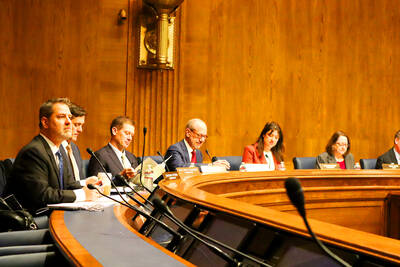
LIMITS: While China increases military pressure on Taiwan and expands its use of cognitive warfare, it is unwilling to target tech supply chains, the report said US and Taiwan military officials have warned that the Chinese People’s Liberation Army (PLA) could implement a blockade within “a matter of hours” and need only “minimal conversion time” prior to an attack on Taiwan, a report released on Tuesday by the US Senate’s China Economic and Security Review Commission said. “While there is no indication that China is planning an imminent attack, the United States and its allies and partners can no longer assume that a Taiwan contingency is a distant possibility for which they would have ample time to prepare,” it said. The commission made the comments in its annual
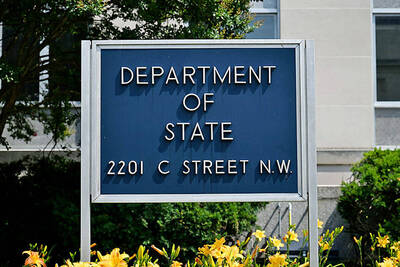
CHECKING BOUNDARIES: China wants to disrupt solidarity among democracies and test their red lines, but it is instead pushing nations to become more united, an expert said The US Department of State on Friday expressed deep concern over a Chinese public security agency’s investigation into Legislator Puma Shen (沈伯洋) for “secession.” “China’s actions threaten free speech and erode norms that have underpinned the cross-strait ‘status quo’ for decades,” a US Department of State spokesperson said. The Chongqing Municipal Public Security Bureau late last month listed Shen as “wanted” and launched an investigation into alleged “secession-related” criminal activities, including his founding of the Kuma Academy, a civil defense organization that prepares people for an invasion by China. The spokesperson said that the US was “deeply concerned” about the bureau investigating Shen
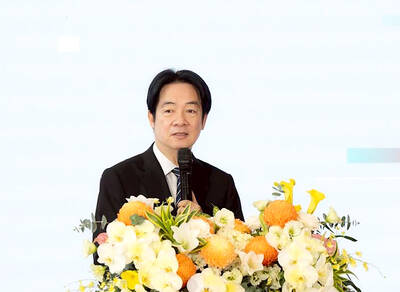
‘TROUBLEMAKER’: Most countries believe that it is China — rather than Taiwan — that is undermining regional peace and stability with its coercive tactics, the president said China should restrain itself and refrain from being a troublemaker that sabotages peace and stability in the Indo-Pacific region, President William Lai (賴清德) said yesterday. Lai made the remarks after China Coast Guard vessels sailed into disputed waters off the Senkaku Islands — known as the Diaoyutai Islands (釣魚台) in Taiwan — following a remark Japanese Prime Minister Sanae Takaichi made regarding Taiwan. Takaichi during a parliamentary session on Nov. 7 said that a “Taiwan contingency” involving a Chinese naval blockade could qualify as a “survival-threatening situation” for Japan, and trigger Tokyo’s deployment of its military for defense. Asked about the escalating tensions